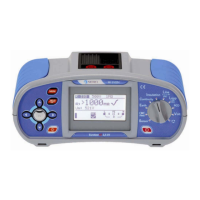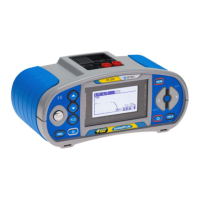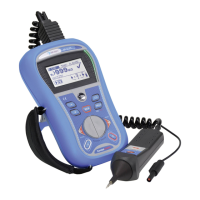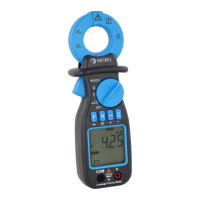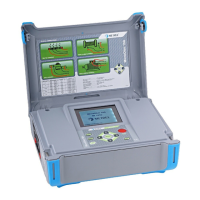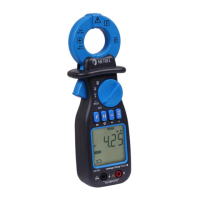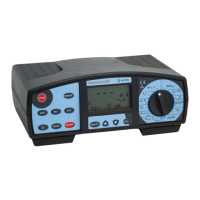MI 3102(H) BT EurotestXE Measurements
53
Note:
High fluctuations of mains voltage can influence the measurement results (the noise sign
is displayed in the message field). In this case it is recommended to repeat few
measurements to check if the readings are stable.
5.7.2 Voltage drop
The voltage drop is calculated based on the difference of line impedance at connection points
(sockets) and the line impedance at the reference point (usually the impedance at the
switchboard).
Circuits for measurement of voltage drop
Figure 5.33: Phase-neutral or phase-phase voltage drop measurement – connection of plug
commander and 3-wire test lead
Voltage drop measurement procedure
Step 1: Measuring the impedance Zref at origin
Select the Z LINE function using the function selector keys.
Set sub-function to ΔU using UP / DOWN keys.
Select test parameters (optional).
Connect test cable to the instrument.
Connect the test leads to the origin of electrical installation (see Figure 5.33).
Press the CAL key to perform the measurement.
Step 2: Measuring the voltage drop
Set sub-function to ΔU using UP / DOWN keys.
Select test parameters (Fuse type must be selected).
Connect test cable or plug commander to the instrument.
Connect the test leads to the tested points (see Figure 5.33).
Press the TEST key to perform the measurement.
Store the result by pressing the MEM key (optional).
Figure 5.34: Examples of voltage drop measurement result
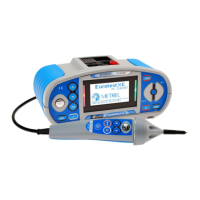
